What is overactive bladder?
An overactive bladder (OAB) is characterized by feeling a strong urge to urinate or leaking a small amount of urine. With an overactive bladder, you also might need to go to the bathroom more frequently or feel an urgent need even when your bladder is not full.
Overactive bladder is very common, affecting millions of men and women in the United States. It can interfere with your daily life, interrupt your sleep, and impact your relationships and mental health.
There is a range of treatments available to improve and manage symptoms of an overactive bladder. Your doctor will work with you to develop a personalized treatment plan that helps restore your quality of life.
Overactive bladder symptoms
The main symptom of an overactive bladder is feeling a strong urge to urinate that often comes on suddenly and does not go away. You might feel that you need to find a bathroom right away and could leak a small amount of urine if you do not get there quickly enough.
Other common symptoms of an OAB include:
- Urge incontinence: Leaking urine after feeling a sudden urge
- Frequent urination: Urinating eight or more times during the day
- Nocturia: Waking two or more times to go to the bathroom at night
When to see a doctor
What causes overactive bladder?
Normally, your bladder muscles relax as it fills, and nerve signals between your bladder and brain tell the muscles when to contract and push out urine. With an overactive bladder, the muscles contract involuntarily, which makes you feel like you have to use the bathroom immediately, even if there isn’t much urine in your bladder.
Doctors can’t always identify the cause of an overactive bladder, but many things can disrupt the signaling between your bladder and brain or cause bladder muscles to contract when they shouldn’t. They include problems with how your bladder and bowel empty, your lifestyle, conditions or injuries that damage nerves and hormonal changes related to menopause.
Overactive bladder risk factors
Overactive bladder is more common among older women who have gone through menopause. Other factors, including disease, injury or vaginal childbirth, can also put you more at risk. Your lifestyle can also affect your bladder.
Risk factors for OAB include:
- Age: Your chances increase with age. About 30% of women over 75 experience overactive bladder symptoms.
- Being overweight or obese: A high body mass index (BMI) is linked with a greater chance of having an overactive bladder.
- Diabetes: Diabetes can damage nerves in your urinary tract and high glucose in the urine can increase urinary frequency.
- Heavy metal exposure: Heavy metals can damage your nerves.
- Prostate issues: An enlarged prostate in men can put pressure on your bladder.
- Sex: Women are more likely to have the condition than men.
- Neurological conditions: Strokes, Parkinson’s disease, Alzheimer’s disease and multiple sclerosis can affect your bladder muscles and nerves.
- Pregnancy and vaginal childbirth: Pregnancy and childbirth can weaken pelvic floor muscles that support your bladder.
- Spinal cord or brain injuries: These can affect the nerves controlling your bladder and the signals it sends to your brain.
Complications of overactive bladder
An overactive bladder can affect your health, work and social life. Many people find it embarrassing to talk about, and it can affect your relationships and lead to feelings of social isolation. If not treated, OAB can lead to further medical issues, such as infection and skin irritation.
- Depression and anxiety: Bladder problems can take a toll on your mental health.
- Interrupted sleep: A constant need to use the bathroom at night can disturb your sleep, causing fatigue, reduced energy and other health problems.
- Reduced physical activity: Being active is important for overall health, but some people find running, brisk walking or other exercise can lead to leaks.
- Skin irritation: Leaking urine can cause skin rash and irritation.
How is an overactive bladder diagnosed?
If you're having frequent or sudden urges to pee, leaking urine or waking up often at night to go, your doctor may check for an overactive bladder. Diagnosis usually starts with a conversation about your symptoms, a physical exam and a few simple tests. These help rule out other possible causes and guide the best treatment for you.
-
Medical history and exam
Your doctor will ask about your symptoms, when they started and how they affect your daily life.
They may also ask about:- Your current medications and any past surgeries
- Other health conditions like diabetes, menopause or nerve issues
- Your fluid intake, including caffeine and alcohol
- Bathroom habits and how often you're having accidents
They might carry out tests, such as:
- Neurological exam: A basic neurological exam may check for reflex or sensory problems that could be affecting bladder control
- Physical exam: This may include a pelvic exam for women to look for signs of vaginal atrophy or prolapse, and a rectal exam to check for muscle tone or an enlarged prostate in men
- Urine sample: A lab test (urinalysis) can check for urinary tract infections, blood in the urine, or other abnormalities that could be causing your symptoms
You may also be asked to keep a bladder diary. This involves writing down how often you go to the bathroom, how much you pee and whether you experience sudden urges or leaks. It can help spot patterns or triggers.
-
Urodynamic tests
Urodynamic tests provide information on how well your bladder, urethra and related muscles are working. These tests are especially helpful if your symptoms don’t improve with initial treatments or if the cause isn’t clear.
Some common urodynamic tests include:
- Post-void residual (PVR): This measures how much urine remains in your bladder after you urinate. A small amount is normal, but too much may suggest your bladder isn’t emptying fully
- Urine flow rate: This test measures how fast and how much urine is released. A slow or interrupted stream could indicate a blockage or weak bladder muscles
- Cystometry: This test measures bladder pressure and capacity. A catheter fills your bladder with fluid while pressure sensors track how your bladder reacts. It helps identify involuntary muscle contractions that may be causing your urgency
-
Imaging tests
If more information is needed, imaging tests may be done to check for structural issues in the bladder or urinary tract.
- Ultrasound: A non-invasive test that uses sound waves to create images of the bladder, kidneys or surrounding organs. It can show how much urine is left in your bladder after you go
- Computed tomography (CT) scan: Offers detailed, cross-sectional images to check for stones, tumors or other abnormalities in the urinary tract
- Cystoscopy: A thin, flexible tube with a camera (called a cystoscope) is inserted through the urethra into the bladder. This lets your doctor visually inspect the bladder lining for inflammation, tumors, stones or blockages
Overactive bladder treatment
If you’re living with overactive bladder, treatment can help reduce sudden urges, frequent trips to the bathroom and leakage. Your doctor will likely start with the most conservative approaches first and move to other options if symptoms don’t improve.
Lifestyle changes
Many people find relief by making a few adjustments to their daily habits. These changes can help calm your bladder, improve control and reduce urgency.
- Changing your diet: Some foods and drinks can irritate the bladder and make symptoms worse. These may include caffeine, alcohol, spicy foods, citrus, artificial sweeteners and carbonated drinks. Avoiding or cutting back on these can help
- Bladder training: This involves gradually increasing the time between bathroom visits to help your bladder hold more urine. It may also include scheduled bathroom trips, even if you don’t feel the urge to go
- Maintaining bowel regularity: Constipation can put extra pressure on your bladder, which can make symptoms worse. Eating more fiber, drinking plenty of water and staying active can help keep your bowels moving regularly
- Managing your weight: Excess weight can put pressure on your bladder and pelvic floor muscles. Losing even a small amount of weight can help reduce leaks and urgency
- Stop using tobacco products: Smoking can irritate the bladder and increase your risk of coughing, which can worsen leakage. Quitting smoking can support better bladder health
Pelvic floor physical therapy
Pelvic floor therapy is a helpful treatment for OAB symptoms like urgency and leakage. It works by strengthening and relaxing the muscles that control urination. A trained therapist will teach you exercises, like Kegels and use techniques like biofeedback to help improve muscle control.
Most people see improvement after six to 12 sessions. Your therapist will customize the plan to fit your needs and track your progress.
Medication
If lifestyle changes and therapy do not work, your doctor may prescribe medication. These usually work by helping your bladder relax and hold more urine. Overactive bladder medications can be taken as pills, gels or skin patches. Your doctor will discuss the benefits and possible side effects with you.
Medications to treat OAB include:
- Anticholinergic or antimuscarinic drugs: These help your bladder muscles relax. They include fesoterodine, oxybutynin and solifenacin.
- Beta-3 adrenergic agonists: These include mirabegron and vibegron, which also work by relaxing your bladder to prevent urgent or uncontrolled urination.
- Combination therapy: Your doctor might recommend combining both types of medications if one on its own is not enough to relieve your symptoms.
- Botulinum toxin: This medication works by relaxing your bladder muscles to reduce feelings of urgency. Your doctor can provide these treatments in their office. The effects can last up to 12 months.
Nerve stimulation
If lifestyle changes, pelvic floor therapy or medications haven’t helped your OAB symptoms, your doctor may suggest nerve stimulation, also called neuromodulation. This treatment uses gentle electrical pulses to help your brain and bladder communicate better. It can reduce how often you need to go, sudden urges and leaks.
There are two main types of nerve stimulation:
- Sacral nerve stimulation (SNS): This involves placing a small device under the skin near your lower back. It sends electrical signals to the sacral nerves, which help control bladder function. You’ll first try a temporary version to see if it improves your symptoms. If it works, your doctor may place a long-term device during a simple outpatient procedure.
- Percutaneous tibial nerve stimulation (PTNS): This is a non-surgical option done in your doctor’s office. A thin needle is placed near a nerve in your ankle and mild pulses are sent to your lower spine. Each session takes about 30 minutes and treatments are usually done weekly for 12 weeks.
Both methods are safe and may be good options if other treatments haven’t worked. Your doctor will help you choose the right one based on your needs and goals.
Surgery
Surgery is not common for overactive bladder but may be an option if nothing else helps and symptoms are severe. Your doctor will explain the risks, recovery time and what to expect.
- Cystoplasty (bladder augmentation): This procedure increases the size of your bladder by using part of your small intestine.
- Urinary diversion: This surgery can divert the path of urine out of your body if your bladder no longer functions as it should. This can involve a replacement bladder, or neobladder, or a stoma, which is a hole in your abdominal wall.
Find specialized care for overactive bladder
At Baylor Scott & White, we offer several locations for the care of overactive bladder, including specialized women’s health centers in North and Central Texas. From diagnosis to treatment options, we're here to support your health with convenient access to the care you need, close to home.

Baylor Scott & White All Saints Medical Center - Fort Worth
1400 8th Ave , Fort Worth, TX, 76104

Baylor Scott & White Clinic - Austin North Burnet
2608 Brockton Dr , Austin, TX, 78758
- Monday: 8:00 am - 5:00 pm
- Tuesday: 8:00 am - 5:00 pm
- Wednesday: 8:00 am - 5:00 pm
- Thursday: 8:00 am - 5:00 pm
- Friday: 8:00 am - 5:00 pm
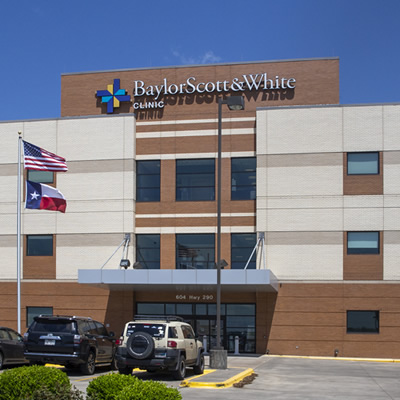
Baylor Scott & White Clinic - Brenham Hwy 290
604 US 290 , Brenham, TX, 77833
- Monday: 7:00 am - 5:00 pm
- Tuesday: 7:00 am - 5:00 pm
- Wednesday: 7:00 am - 5:00 pm
- Thursday: 7:00 am - 7:00 pm
- Friday: 7:00 am - 5:00 pm
- Saturday: 8:00 am - 12:00 pm
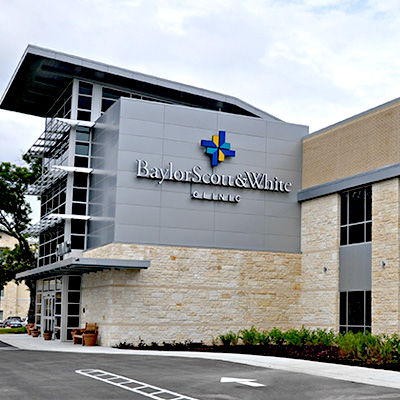
Baylor Scott & White Clinic - Cedar Park
910 E Whitestone Blvd , Cedar Park, TX, 78613
- Monday: 8:00 am - 5:00 pm
- Tuesday: 8:00 am - 5:00 pm
- Wednesday: 8:00 am - 5:00 pm
- Thursday: 8:00 am - 5:00 pm
- Friday: 8:00 am - 5:00 pm
- Monday: 7:00 am - 5:00 pm
- Tuesday: 7:00 am - 5:00 pm
- Wednesday: 7:00 am - 5:00 pm
- Thursday: 7:00 am - 5:00 pm
- Friday: 7:00 am - 5:00 pm
- Saturday: 9:00 am - 2:00 pm
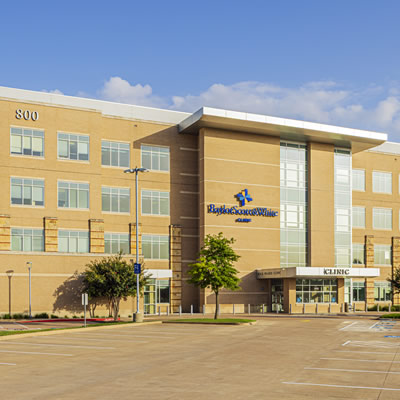
Baylor Scott & White Clinic - College Station Rock Prairie
800 Scott and White Dr , College Station, TX, 77845
- Monday: 7:30 am - 5:00 pm
- Tuesday: 7:30 am - 5:00 pm
- Wednesday: 7:30 am - 5:00 pm
- Thursday: 7:30 am - 5:00 pm
- Friday: 7:30 am - 5:00 pm
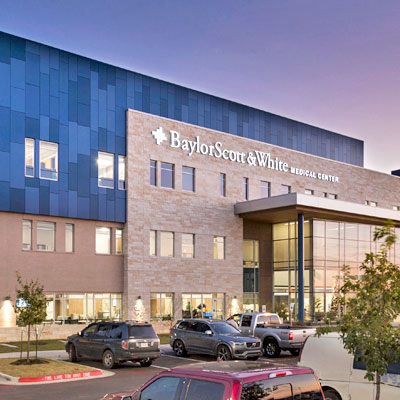
Baylor Scott & White Clinic - Pflugerville Medical Center (Building 1)
2600 E Pflugerville Pkwy Bldg 1, Ste 200, Pflugerville, TX, 78660
- Monday: 8:00 am - 5:00 pm
- Tuesday: 8:00 am - 5:00 pm
- Wednesday: 8:00 am - 5:00 pm
- Thursday: 8:00 am - 5:00 pm
- Friday: 8:00 am - 5:00 pm
- Monday: 7:30 am - 4:00 pm
- Tuesday: 7:30 am - 4:00 pm
- Wednesday: 7:30 am - 4:00 pm
- Thursday: 7:30 am - 4:00 pm
- Friday: 7:30 am - 4:00 pm
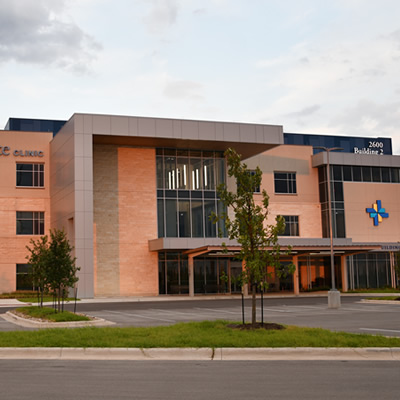
Baylor Scott & White Clinic - Pflugerville Medical Center Building 2
2600 E Pflugerville Pkwy Building 2, Pflugerville, TX, 78660
- Monday: 8:00 am - 5:00 pm
- Tuesday: 8:00 am - 5:00 pm
- Wednesday: 8:00 am - 5:00 pm
- Thursday: 8:00 am - 5:00 pm
- Friday: 8:00 am - 5:00 pm
- Monday: 8:00 am - 4:00 pm
- Tuesday: 8:00 am - 4:00 pm
- Wednesday: 8:00 am - 4:00 pm
- Thursday: 8:00 am - 4:00 pm
- Friday: 8:00 am - 4:00 pm
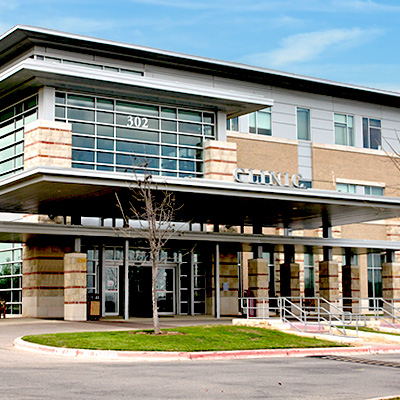
Baylor Scott & White Clinic - Round Rock 302 University
302 University Blvd , Round Rock, TX, 78665
- Monday: 8:00 am - 5:00 pm
- Tuesday: 8:00 am - 5:00 pm
- Wednesday: 8:00 am - 5:00 pm
- Thursday: 8:00 am - 5:00 pm
- Friday: 8:00 am - 5:00 pm

Baylor Scott & White Clinic - Santa Fe
1402 W Ave H , Temple, TX, 76504
- Monday: 8:00 am - 5:00 pm
- Tuesday: 8:00 am - 5:00 pm
- Wednesday: 8:00 am - 5:00 pm
- Thursday: 8:00 am - 5:00 pm
- Friday: 8:00 am - 5:00 pm
- Monday: 7:00 am - 4:30 pm
- Tuesday: 7:00 am - 4:30 pm
- Wednesday: 7:00 am - 4:30 pm
- Thursday: 7:00 am - 4:30 pm
- Friday: 7:00 am - 4:30 pm
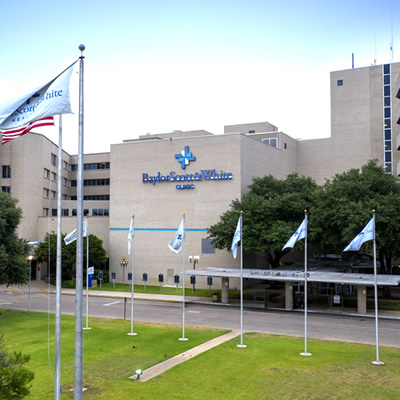
Baylor Scott & White Clinic - Temple
2401 S 31st St , Temple, TX, 76508
- Monday: 8:00 am - 5:00 pm
- Tuesday: 8:00 am - 5:00 pm
- Wednesday: 8:00 am - 5:00 pm
- Thursday: 8:00 am - 5:00 pm
- Friday: 8:00 am - 5:00 pm

Baylor Scott & White Clinic - Temple Professional Plaza II
1713 SW H K Dodgen Loop Bldg II, Ste 100, Temple, TX, 76502
- Monday: 8:00 am - 6:00 pm
- Tuesday: 8:00 am - 6:00 pm
- Wednesday: 8:00 am - 6:00 pm
- Thursday: 8:00 am - 6:00 pm
- Friday: 8:00 am - 12:00 pm

Baylor Scott & White Medical Center - Austin
5245 W US Hwy 290 Service Rd , Austin, TX, 78735

Baylor Scott & White Medical Center - Brenham
700 Medical Pkwy , Brenham, TX, 77833
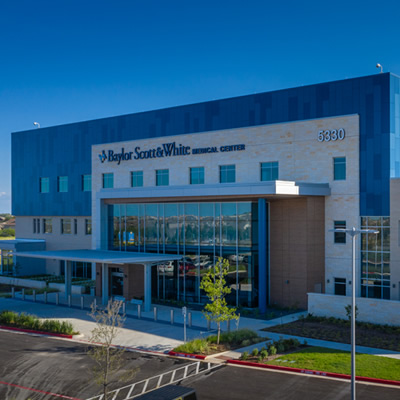
Baylor Scott & White Medical Center - Buda
5330 Overpass Rd , Buda, TX, 78610
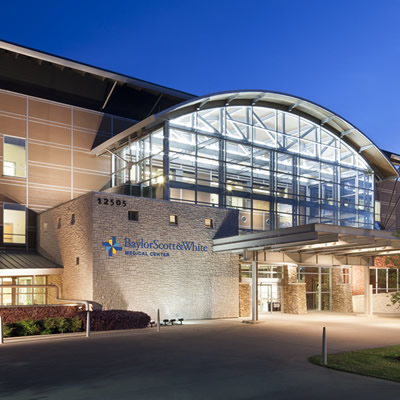
Baylor Scott & White Medical Center - Centennial
12505 Lebanon Rd , Frisco, TX, 75035

Baylor Scott & White Medical Center - College Station
700 Scott and White Dr , College Station, TX, 77845

Baylor Scott & White Medical Center - Frisco
5601 Warren Pkwy , Frisco, TX, 75034

Baylor Scott & White Medical Center - Frisco at PGA Parkway
7600 Better Way , Frisco, TX, 75033

Baylor Scott & White Medical Center - Grapevine
1650 W College St , Grapevine, TX, 76051
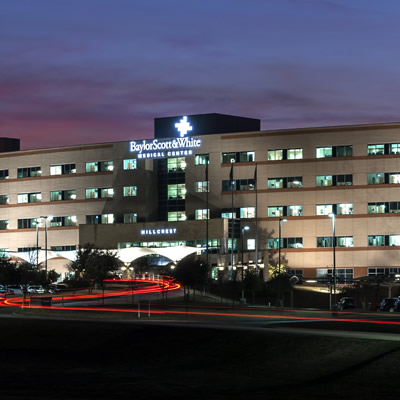
Baylor Scott & White Medical Center - Hillcrest
100 Hillcrest Medical Blvd , Waco, TX, 76712

Baylor Scott & White Medical Center - Irving
1901 N MacArthur Blvd , Irving, TX, 75061

Baylor Scott & White Medical Center - Lake Pointe
6800 Scenic Dr , Rowlett, TX, 75088
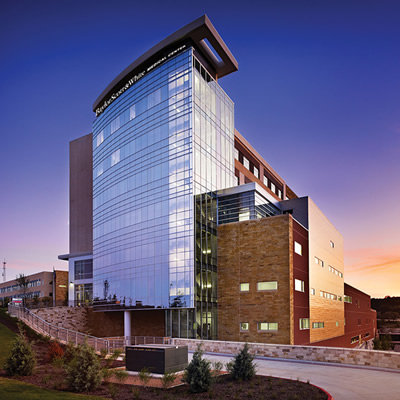
Baylor Scott & White Medical Center - Lakeway
100 Medical Pkwy , Lakeway, TX, 78738
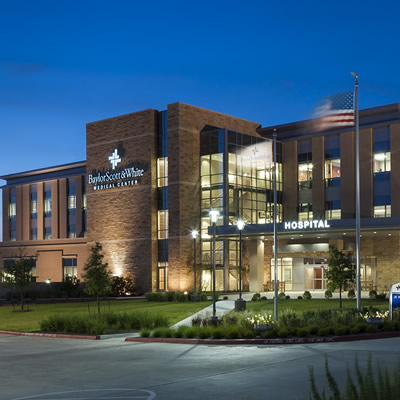
Baylor Scott & White Medical Center - Marble Falls
810 W State Hwy 71 , Marble Falls, TX, 78654

Baylor Scott & White Medical Center - McKinney
5252 W University Dr Highway 380 at Lake Forest Drive, McKinney, TX, 75071
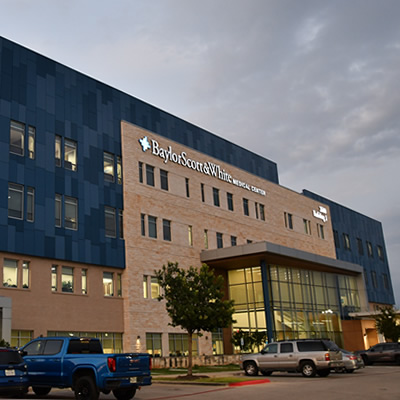
Baylor Scott & White Medical Center - Pflugerville (Building 1)
2600 E Pflugerville Pkwy Bldg 1, Ste 100, Pflugerville, TX, 78660

Baylor Scott & White Medical Center - Plano
4700 Alliance Blvd , Plano, TX, 75093
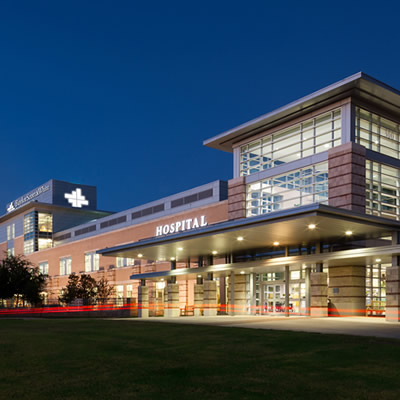
Baylor Scott & White Medical Center - Round Rock
300 University Blvd , Round Rock, TX, 78665

Baylor Scott & White Medical Center - Temple
2401 S 31st St , Temple, TX, 76508

Baylor Scott & White Medical Center - Waxahachie
2400 N Interstate 35E , Waxahachie, TX, 75165

Baylor Scott & White OB/GYN Clinic - Waco
120 Hillcrest Medical Blvd Office Building 2, Ste 201-2, Waco, TX, 76712
- Monday: 8:00 am - 5:00 pm
- Tuesday: 8:00 am - 5:00 pm
- Wednesday: 8:00 am - 5:00 pm
- Thursday: 8:00 am - 5:00 pm
- Friday: 8:00 am - 5:00 pm

Baylor Scott & White Obstetrics & Gynecology - Frisco
4461 Coit Rd Ste 205, Frisco, TX, 75035
- Monday: 8:00 am - 4:45 pm
- Tuesday: 8:00 am - 4:45 pm
- Wednesday: 8:00 am - 4:45 pm
- Thursday: 8:00 am - 4:45 pm
- Friday: 8:00 am - 4:30 pm
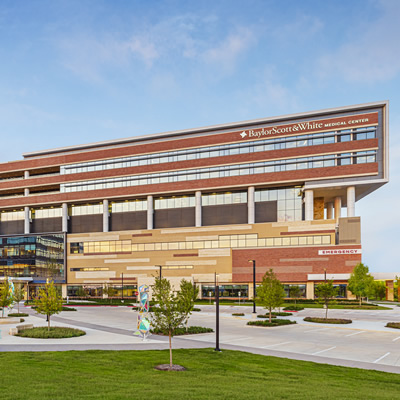
Baylor Scott & White Obstetrics & Gynecology - Frisco at PGA Parkway
16050 Everwell Ln Professional Pavilion I, Ste 200, Frisco, TX, 75033
- Monday: 8:00 am - 4:45 pm
- Tuesday: 8:00 am - 4:45 pm
- Wednesday: 8:00 am - 4:45 pm
- Thursday: 8:00 am - 4:45 pm
- Friday: 8:00 am - 4:30 pm

Baylor Scott & White Obstetrics & Gynecology - Grapevine
1631 Lancaster Dr Ste 370, Grapevine, TX, 76051
- Monday: 8:00 am - 5:00 pm
- Tuesday: 8:00 am - 5:00 pm
- Wednesday: 8:00 am - 5:00 pm
- Thursday: 8:00 am - 5:00 pm
- Friday: 8:00 am - 5:00 pm
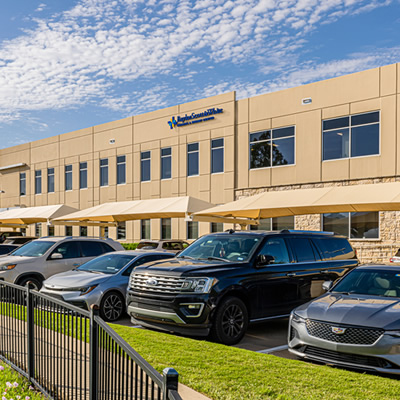
Baylor Scott & White Obstetrics & Gynecology - Rockwall
1005 W Ralph Hall Pkwy Ste 115, Rockwall, TX, 75032
- Monday: 8:00 am - 5:00 pm
- Tuesday: 8:00 am - 5:00 pm
- Wednesday: 8:00 am - 5:00 pm
- Thursday: 8:00 am - 5:00 pm
- Friday: 8:00 am - 5:00 pm

Baylor Scott & White Obstetrics & Gynecology - Rowlett
9500 Lakeview Pkwy Ste 100, Rowlett, TX, 75088
- Monday: 8:00 am - 5:00 pm
- Tuesday: 8:00 am - 5:00 pm
- Wednesday: 8:00 am - 5:00 pm
- Thursday: 8:00 am - 5:00 pm
- Friday: 8:00 am - 5:00 pm

Baylor Scott & White Obstetrics & Gynecology - Waxahachie
2460 N Interstate 35E Ste 225, Waxahachie, TX, 75165
- Monday: 9:00 am - 4:30 pm
- Tuesday: 9:00 am - 4:30 pm
- Wednesday: 9:00 am - 4:30 pm
- Thursday: 9:00 am - 4:30 pm
- Friday: 9:00 am - 4:30 pm

Baylor Scott & White Park Lane OB/GYN Associates
9101 N Central Expy Ste 250, Dallas, TX, 75231
- Monday: 8:00 am - 4:30 pm
- Tuesday: 8:00 am - 4:30 pm
- Wednesday: 8:00 am - 4:30 pm
- Thursday: 8:00 am - 4:30 pm
- Friday: 8:00 am - 4:30 pm

Baylor Scott & White Specialty Clinic - Harker Heights
907 Mountain Lion Cir , Harker Heights, TX, 76548
- Monday: 8:00 am - 5:00 pm
- Tuesday: 8:00 am - 5:00 pm
- Wednesday: 8:00 am - 5:00 pm
- Thursday: 8:00 am - 5:00 pm
- Friday: 8:00 am - 5:00 pm

Baylor Scott & White Specialty Clinic - Killeen Hemingway
2405 S Clear Creek Rd , Killeen, TX, 76549
- Monday: 8:00 am - 5:00 pm
- Tuesday: 8:00 am - 5:00 pm
- Wednesday: 8:00 am - 5:00 pm
- Thursday: 8:00 am - 5:00 pm
- Friday: 8:00 am - 5:00 pm
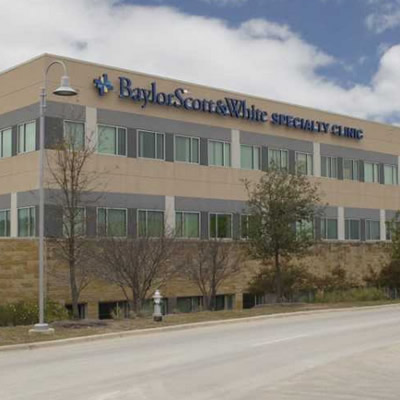
Baylor Scott & White Specialty Clinic - Lakeway
200 Medical Pkwy , Lakeway, TX, 78738
- Monday: 8:00 am - 5:00 pm
- Tuesday: 8:00 am - 5:00 pm
- Wednesday: 8:00 am - 5:00 pm
- Thursday: 8:00 am - 5:00 pm
- Friday: 8:00 am - 5:00 pm
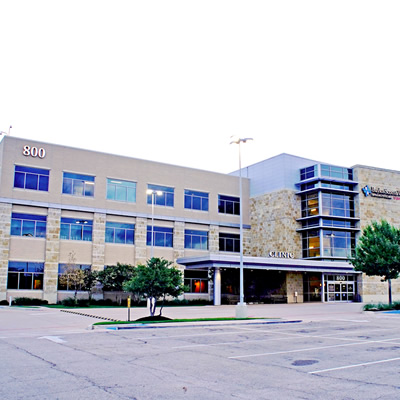
Baylor Scott & White Specialty Clinic - Marble Falls
800 W State Hwy 71 , Marble Falls, TX, 78654
- Monday: 8:00 am - 5:30 pm
- Tuesday: 8:00 am - 5:30 pm
- Wednesday: 8:00 am - 5:30 pm
- Thursday: 8:00 am - 5:30 pm
- Friday: 8:00 am - 5:30 pm

Baylor Scott & White Specialty Clinic - Salado
213 Millcreek Dr Ste 190, Salado, TX, 76571
- Monday: 8:00 am - 5:00 pm
- Tuesday: 8:00 am - 5:00 pm
- Wednesday: 8:00 am - 5:00 pm
- Thursday: 8:00 am - 5:00 pm
- Friday: 8:00 am - 5:00 pm

Baylor Scott & White Surgicare - Dallas
4020 Junius St , Dallas, TX, 75246
- Monday: 6:00 am - 5:00 pm
- Tuesday: 6:00 am - 5:00 pm
- Wednesday: 6:00 am - 5:00 pm
- Thursday: 6:00 am - 5:00 pm
- Friday: 6:00 am - 5:00 pm
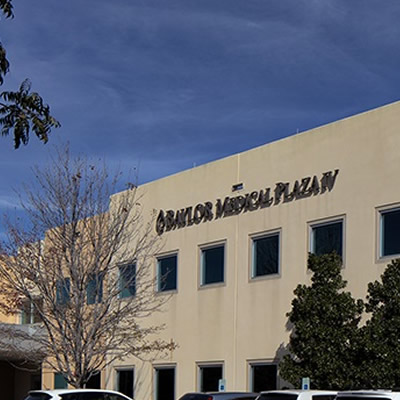
Baylor Scott & White Surgicare - Garland
530 Clara Barton Blvd Ste 100, Garland, TX, 75042
- Monday: 6:00 am - 5:00 pm
- Tuesday: 6:00 am - 5:00 pm
- Wednesday: 6:00 am - 5:00 pm
- Thursday: 6:00 am - 5:00 pm
- Friday: 6:00 am - 5:00 pm

Baylor Scott & White Women's Health Group
3600 Gaston Ave Wadley Tower, Ste 1158, Dallas, TX, 75246
- Monday: 9:00 am - 5:00 pm
- Tuesday: 9:00 am - 5:00 pm
- Wednesday: 9:00 am - 5:00 pm
- Thursday: 9:00 am - 5:00 pm
- Friday: 9:00 am - 4:30 pm

Baylor Scott & White Women’s Health Specialists - Waxahachie
2460 N Interstate 35E Ste 165, Waxahachie, TX, 75165
- Monday: 8:00 am - 5:00 pm
- Tuesday: 8:00 am - 5:00 pm
- Wednesday: 8:00 am - 5:00 pm
- Thursday: 8:00 am - 5:00 pm
- Friday: 8:00 am - 5:00 pm
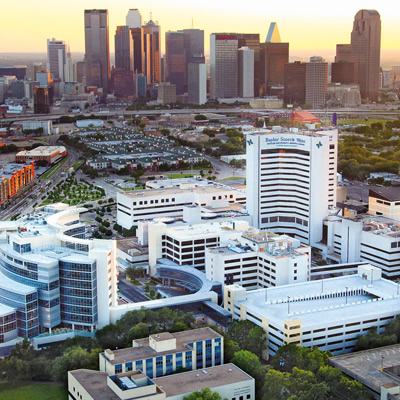
Baylor University Medical Center, part of Baylor Scott & White Health
3500 Gaston Ave , Dallas, TX, 75246
Frequently asked questions
-
Can overactive bladder be cured?
An overactive bladder is a chronic condition. It is not always realistic to consider how to “cure” overactive bladder problems. However, many treatments can help you manage your symptoms and restore your quality of life. Most people find that lifestyle changes, physical therapy, medication or a combination of treatments improve their bladder control.
-
How long does overactive bladder last?
Overactive bladder is usually a long-term condition that doesn’t go away on its own. While issues like a urinary tract infection may cause temporary symptoms, OAB often needs treatment to manage and prevent it from getting worse. Ongoing care is usually needed for lasting relief.
-
Can anxiety cause overactive bladder?
Yes, anxiety can make overactive bladder symptoms worse. It can increase bladder activity, make nerves more sensitive, and cause muscle tension, all leading to more frequent urges to urinate. OAB can also cause anxiety, creating a cycle of symptoms.
-
Does overactive bladder cause pain?
Overactive bladder doesn’t usually cause pain, but some people may feel discomfort, especially when urinating. In rare cases, it can be linked to interstitial cystitis (IC), which causes bladder and pelvic pain. If you're experiencing pain along with OAB symptoms, talk to your healthcare provider for advice and treatment.
-
Can overactive bladder come and go?
Yes, overactive bladder symptoms can come and go. It’s usually a long-term condition, but some people have worse symptoms at times and milder ones at other times. Things like lifestyle, health issues and treatment can affect how often and how bad the symptoms are. Talk to your doctor for advice.
How we reviewed this page
-
July 08, 2025

